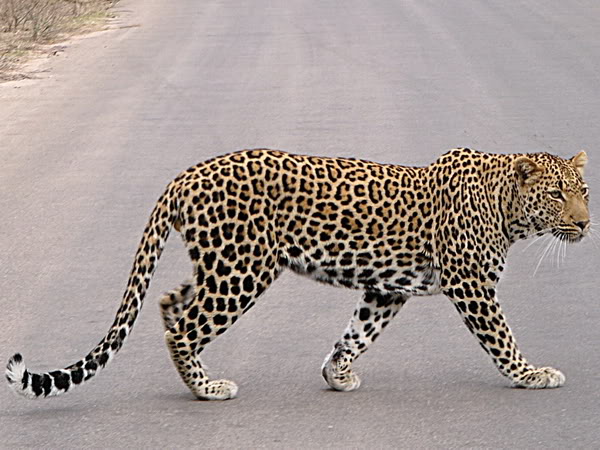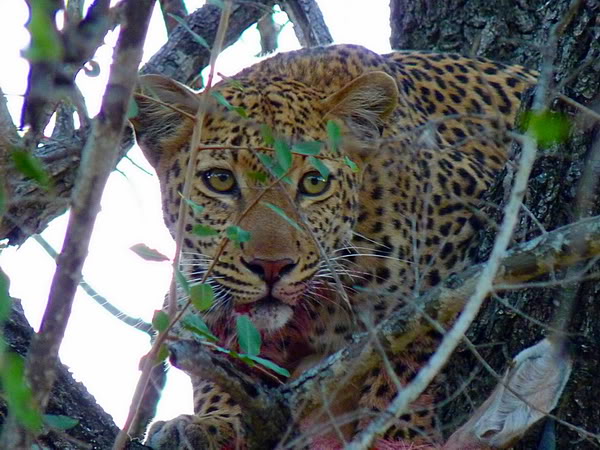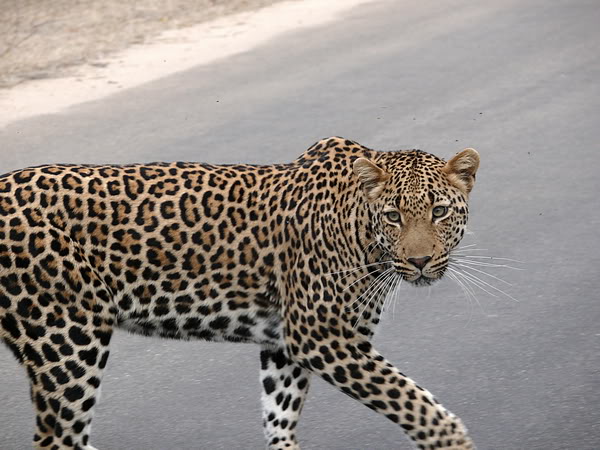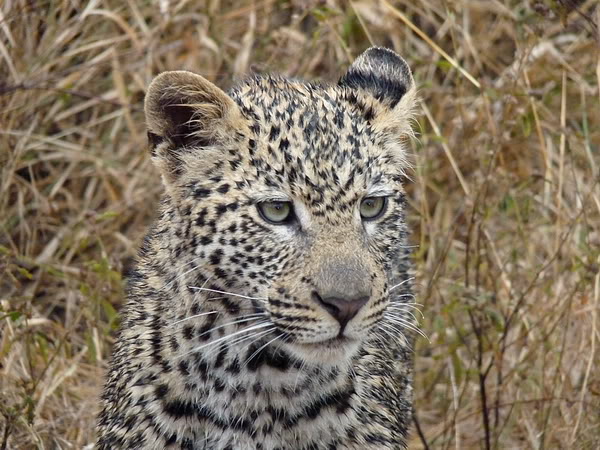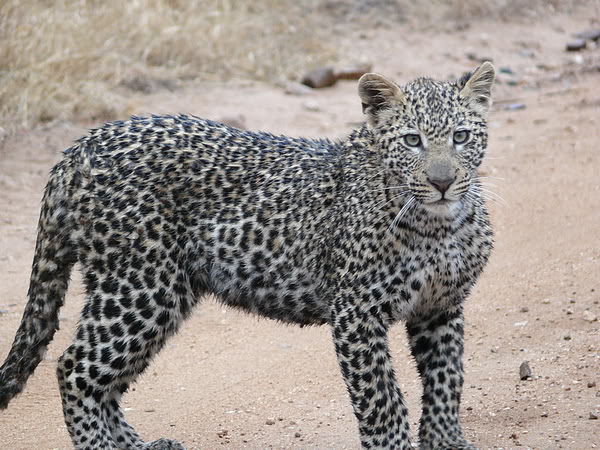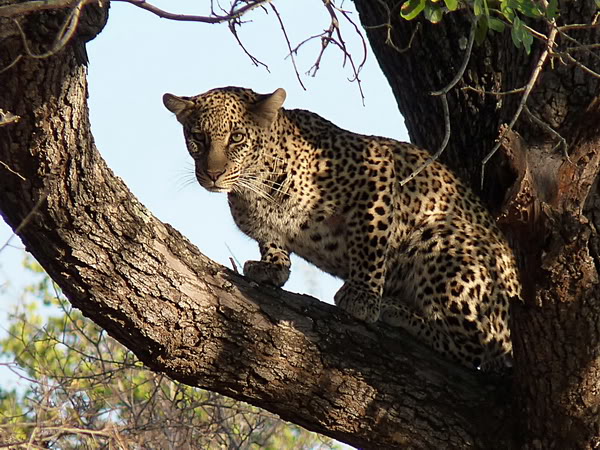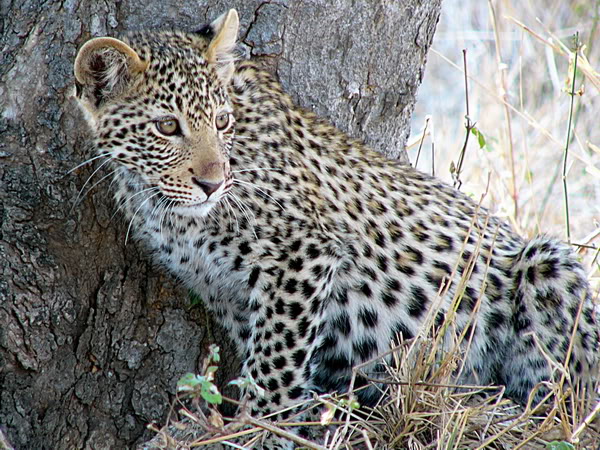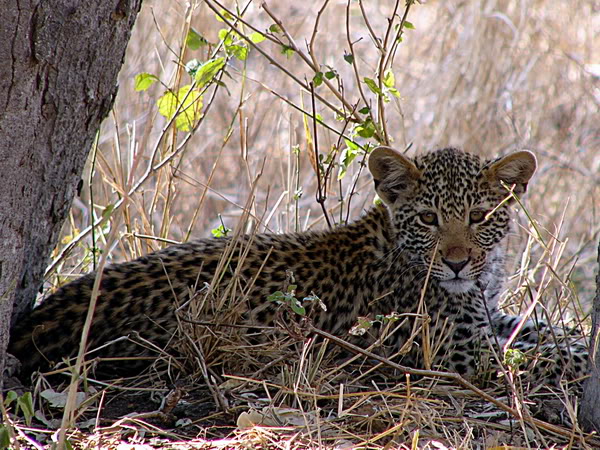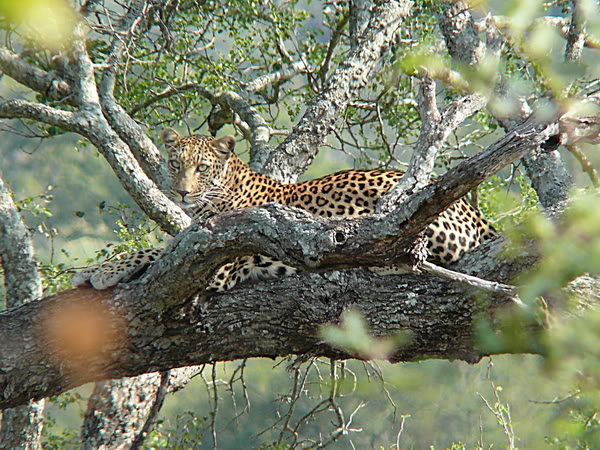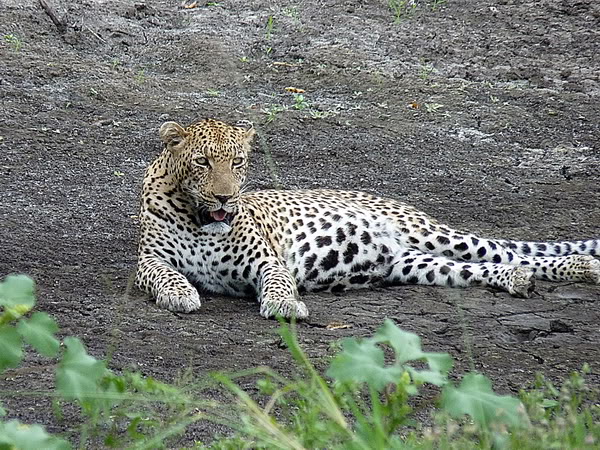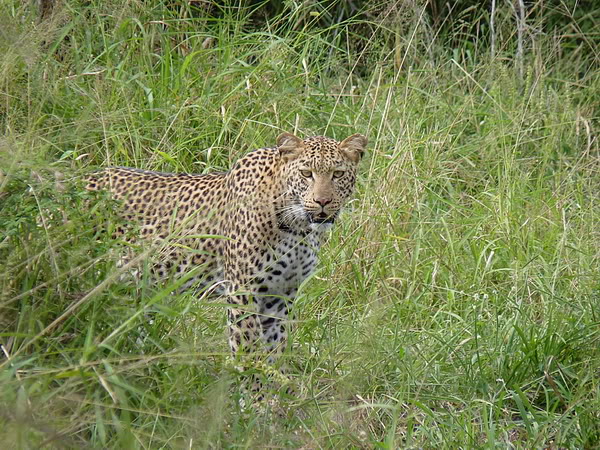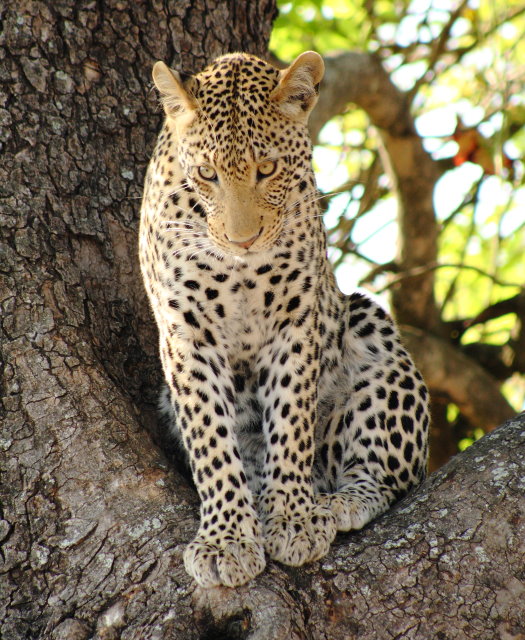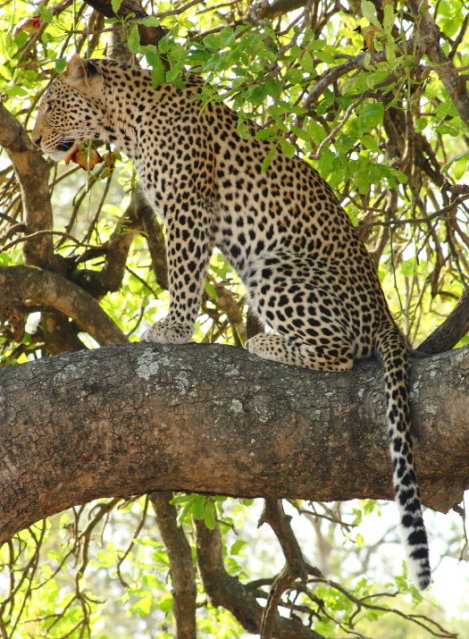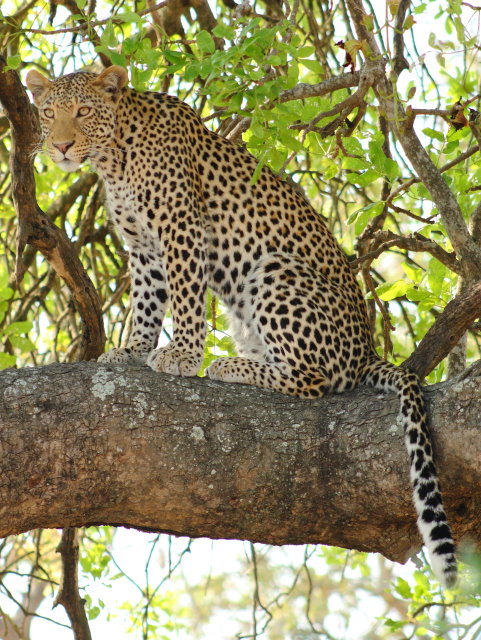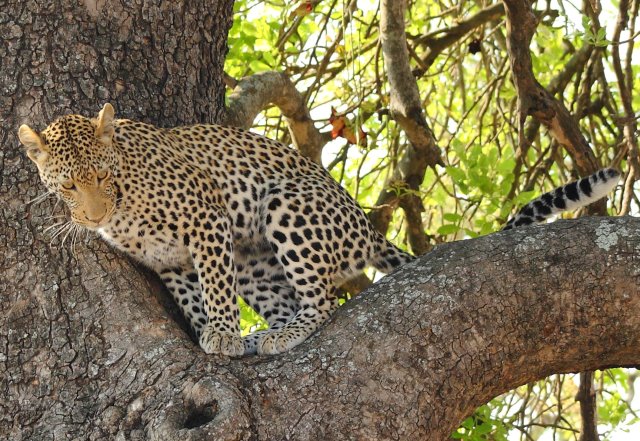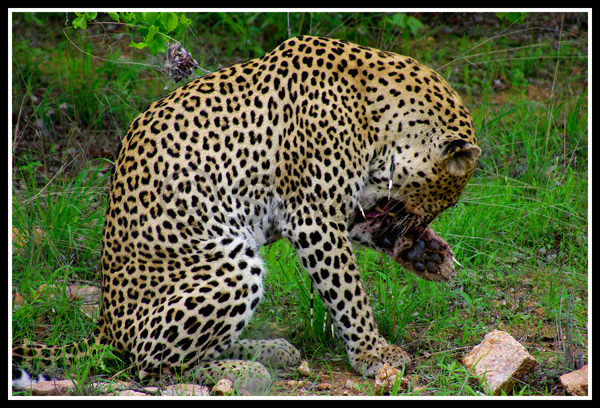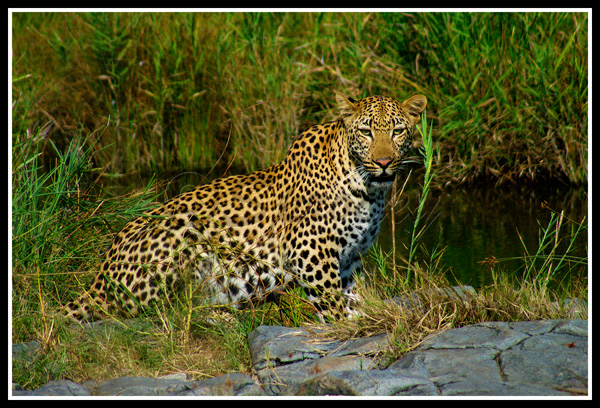Facts
Size Head-body length: 100 - 190 cm
Tail length: 70 - 95 cm
Shoulder height: 45 - 80 cm
Male weight: 37 - 90 kg
Female weight: 28 - 60 kg
Gestation: 2-25 months
Speed: 60km/h
Leopards are graceful and powerful big cats closely related to lions, tigers, and jaguars. They live in sub-Saharan Africa, northeast Africa, Central Asia, India, and China. However, many of their populations are endangered, especially outside of Africa. Despite its vast range, the total population is probably fewer than 600 000.
The leopard is so strong and comfortable in trees that it often hauls its kills into the branches and by dragging the bodies of large animals aloft it hopes to keep them safe from scavengers such as hyena. Leopards can also hunt from trees, where their spotted coats allow them to blend with the leaves until they spring with a deadly pounce.
They hunt anything from small beetles to large herbivores and are strong swimmers so very much at home in the water, where they sometimes eat fish or crabs. When human settlements are present, leopards often attack dogs and, occasionally, people.
Leopards are basically solitary and go out of their way to avoid one another. Each animal has a home range that overlaps with its neighbors, but the males range is much larger and generally overlaps with those of several females.
Female leopards can give birth at any time of the year. They usually have two grayish cubs with barely visible spots. The mother hides her cubs and moves them from one safe location to the next until they are old enough to begin playing and learning to hunt. Cubs live with their mothers for about two years.
Most leopards are light colored with distinctive dark spots that are called rosettes, because they resemble the shape of a rose.
Some pics to start things off
